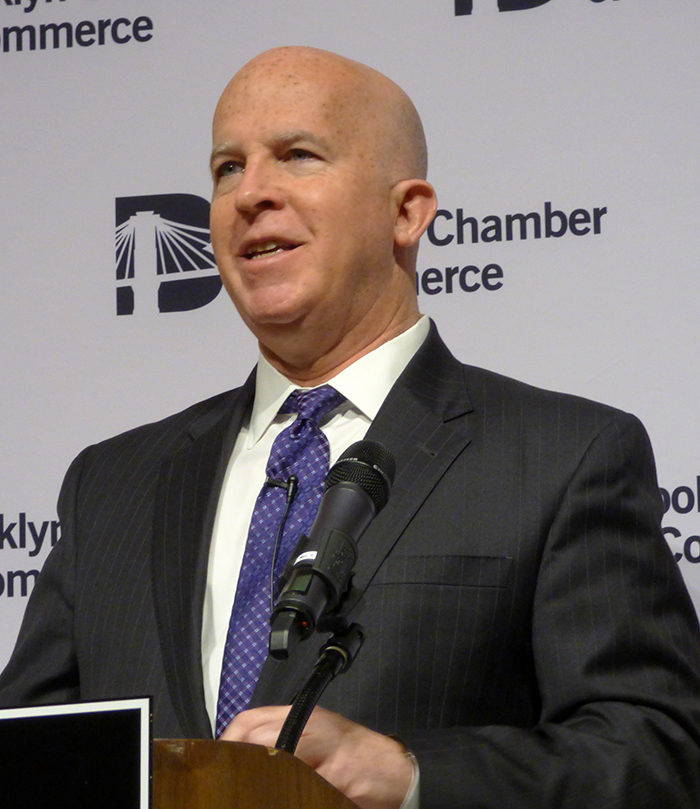Police Commissioner O’Neil talks crime stats, promises to fix Atlantic Ave. permit problem in Brooklyn
Brooklyn Chamber President Carlo Scissura’s final Newsmakers event

Police Commissioner James O’Neill spoke about crime stats and promised to solve a nagging neighborhood issue at the Brooklyn Chamber of Commerce's Newsmakers event Tuesday morning. Photos by Mary Frost
Police Commissioner James O’Neill updated Brooklyn’s business community on the city’s improving crime statistics, took questions and promised to solve a nagging neighborhood issue at Tuesday’s Brooklyn Chamber of Commerce’s Newsmakers event.
The breakfast meeting was also notable as Chamber President Carlo Scissura bid farewell to members with this, his final Newsmakers. Heading the Chamber since 2012, he’s stepping down to lead the New York Building Congress, a real estate and construction trade group.
Brooklyn had more than its fair share of issues back in the day, when Commissioner O’Neill, known as a “cop’s cop,” lived in the borough.
